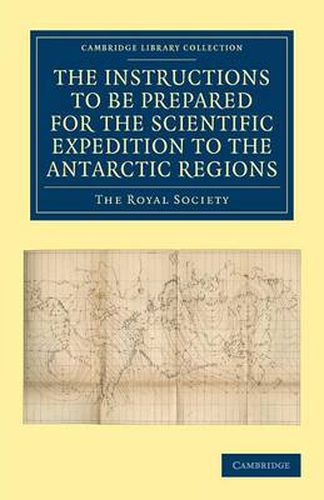Readings Newsletter
Become a Readings Member to make your shopping experience even easier.
Sign in or sign up for free!
You’re not far away from qualifying for FREE standard shipping within Australia
You’ve qualified for FREE standard shipping within Australia
The cart is loading…






The 1839-43 Antarctic expedition was primarily a scientific voyage. James Clark Ross, a member of the expedition that had located the Magnetic North Pole in 1831, was the natural choice to lead this mission to find the Magnetic South Pole. Although he was unsuccessful in this aim, he charted the coastline of most of the continent, collected valuable scientific data and made several important discoveries. Published in 1840, these papers were prepared by the Royal Society for the expedition and give detailed instructions on how to make the important magnetic and meteorological observations. There are further instructions, such as how to preserve animal specimens, and surprisingly a request to investigate the reasons for the poor cultivation of vines at the Cape of Good Hope as ‘the bad quality of Cape wine … is well known’. These papers reveal the expectations and demands placed upon this expedition.
$9.00 standard shipping within Australia
FREE standard shipping within Australia for orders over $100.00
Express & International shipping calculated at checkout
The 1839-43 Antarctic expedition was primarily a scientific voyage. James Clark Ross, a member of the expedition that had located the Magnetic North Pole in 1831, was the natural choice to lead this mission to find the Magnetic South Pole. Although he was unsuccessful in this aim, he charted the coastline of most of the continent, collected valuable scientific data and made several important discoveries. Published in 1840, these papers were prepared by the Royal Society for the expedition and give detailed instructions on how to make the important magnetic and meteorological observations. There are further instructions, such as how to preserve animal specimens, and surprisingly a request to investigate the reasons for the poor cultivation of vines at the Cape of Good Hope as ‘the bad quality of Cape wine … is well known’. These papers reveal the expectations and demands placed upon this expedition.